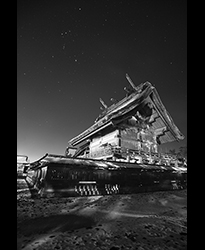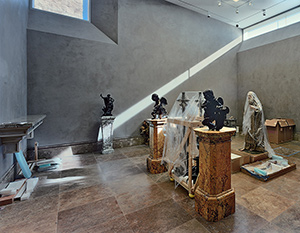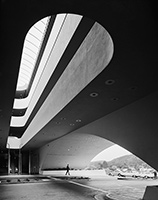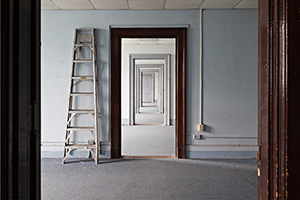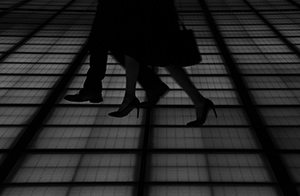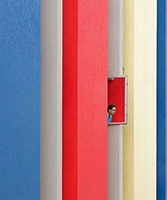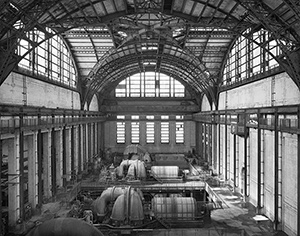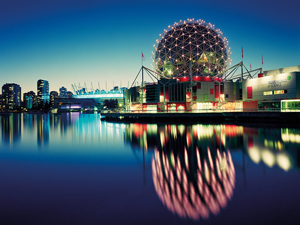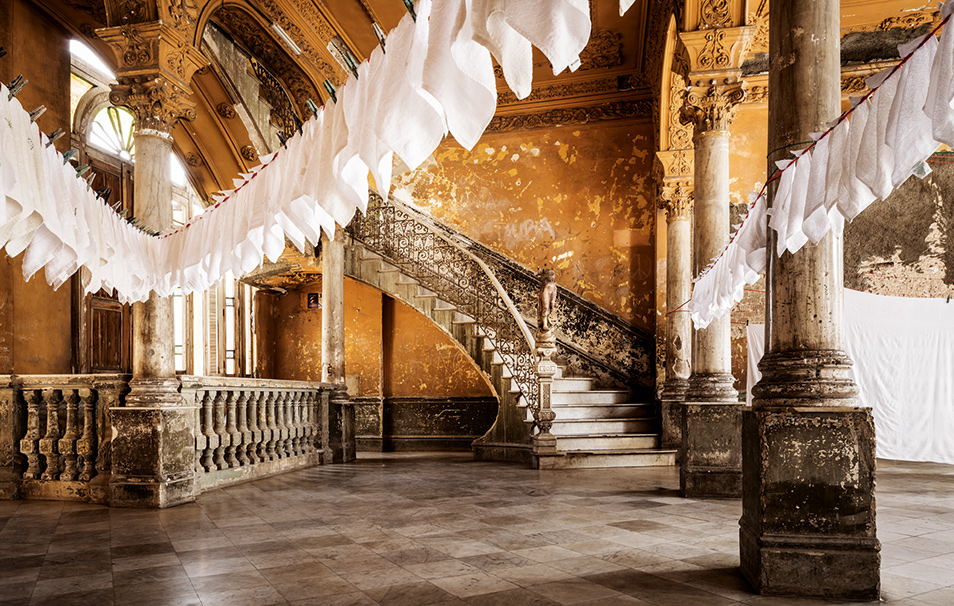A bit like the real Chartres, Markus Brunetti‘s photo of the French cathedral must be seen in person to be appreciated. Standing ten feet tall, the hyper-detailed image arguably reveals more of the structure than seeing it in person does—stonework visible only to birds is recorded in sharp, smoothly-lit detail. Composed of many hundreds of smaller photos that are digitally cleaned, straightened and stripped of modern interference before being stitched together, Brunetti’s image allows a view of the structure’s carvings and stained glass that would be impossible in person. The result is closer to an architect’s elevation than a view from the ground (where all of Brunetti’s component photos were taken), an idealized picture with an unsettling floating perspective. Brunetti recorded cathedrals and sacred spaces all over Europe for his series “FACADES,” on view until October 17 at Yossi Milo Gallery in New York and at Palazzo Fortuny in Venice until November 22, in the exhibition “PROPORTIO.” Before beginning the series in 2005, the German artist worked as a photographer in advertising but quit to travel with this partner Betty Schöner in a truck specially fitted for the project. He tells PDN about the project via email:
PDN: What first attracted you to these buildings?
Markus Brunetti: I grew up in a family of builders and architects and my grandfather and father often took me to the construction sights to explain the buildings they were working on to me. From these early instructions I developed a strong and lasting interest in architecture.
In the “FACADES” project I could express this interest and combine it with my other talents. I think there is no better way to explain and show the development of our European culture in the past thousand years than to depict the sacred buildings of all regions and cultures of Europe. The project started in Orvieto in 2005 where—being deeply impressed by the building and the surrounding town—I started first experiments with my own visual interpretation of the Duomo Santa Maria Assunta, which subsequently became the first work of the “FACADES” series.
PDN: How did you develop your technique? Did you have a vision of what the final image would look?
MB: I had the idea of making a series in order to make the different approaches, styles, architectures and local, regional tastes and styles comparable. The best of the craftsmen, architects, builders and artists of their times worked on these buildings and their facades. With the idea in mind to express this rich tradition in a visual work we (Betty Schöner, my partner and I) started to experiment and come up with our own visual approach. Before the final approach that you can see now we had a long phase of [trial] and error to undergo. For each work I have to come up with a new strategy of capturing as each location, each situation and each facade is different.
PDN: In person, the photographs are almost dizzying in their scale and detail—how did you think about size for this project?
MB: For my work, the idea to show something unseen needs the richness of details and the accurateness of the image. Online presentations or books and catalogues can only show the FACADES in very reduced sizes and are only means to spread the knowledge about them. In order to grasp and understand a FACADE you need to see an original—only then all the information and atmosphere in the images become visible and make the comparison of works much more interesting.
PDN: Are there modern buildings or architects that attract your attention in a similar way?
MB: I do not have an “age limit” when choosing the buildings. My choice is very subjective and not following the building dates or famous builders. There are and will be modern buildings of the twentieth- or even twenty-first century in the series and there will also be synagogues, mosques, orthodox churches and so on. The journey will continue and the longer we work on it, the more variety we see and include in the series and the more we are fascinated ourselves when putting the different facades in context.
Related Article:
Setting the Stage: David Leventi’s “Opera”

